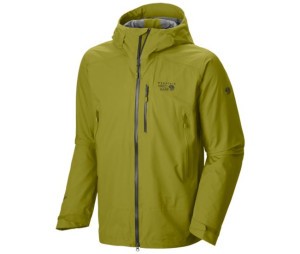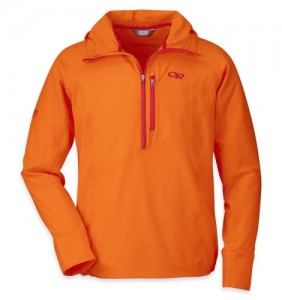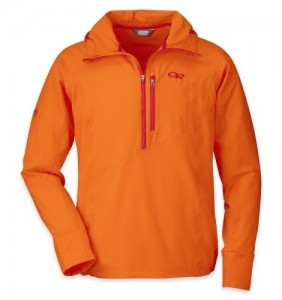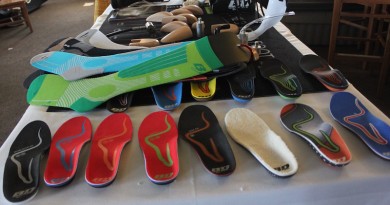Gear-up for Winter, 2014
We give you the low-down on all the latest and greatest gear for 2014, including skis, boards, boots, and jackets.
VERMONT — Admit it, most of us love our gear and we love knowing what’s new on the scene — even if some of us still ski and ride on some pretty used models. Still, we all like knowing what’s out there, and within the skiing and riding industry, new gear continues to play a huge role in the sport as it pioneers new ways to play on the snow, go faster, higher, further or with more ease or precision.
In fact, if you think about the advent of Burton’s snowboard back in the mid-1970s (1975 was when Jake created his Burton board, though it took a few years before the sport really mushroomed and Burton boards became an industry unto itself), or the development of twin tip skis in the mid to late 1990s, or the advancement of shaped skis (early 1990s) and wider powder skis over the past decade, the equipment in this sport plays an outsized role in shaping how the sport has developed over the past 30 years. Soft goods have also made enormous advancements in terms of keeping skiers and riders warmer and drier than ever before.
So, here’s a brief rundown of a small fraction of the gear that’s out there for the choosing whether you’re hiking, backcountry skiing, skiing or riding at resorts, or ice climbing Vermont’s cliffs.
Skis, boots and boards
In recent years, skis took on dramatic new shapes and widths. The shape skis moved in during the early1990s (1993 was the first year) and in the past decade, the skis have gotten fat – really fat.
While the fatter skis may mean for a great day of skiing at points West, skiers in northern New England can look forward to picking lines on skis that float well when it dumps (remember last Valentine’s Day?) as well as hold an edge when the conditions are, let’s say, firm.
The Blizzard Brahma ($800) has lost 10mm underfoot from the previous year’s model. Meanwhile, the moderate tip rocker enhances floatation without reducing the ski’s precision. It makes the ski more hardy and ready for a serious workout.
In another example, Colorado-based Icelantic rolls out new models in their SKNY line of skis. These modifications of their four original models offer the same performance, but change faster from edge to edge. New this year, Icelantic introduces the Keeper SKNY. Designed originally as a big-mountain powder ski, this newer version keeps the same specs—such as traditional camber underfoot and an early-rise tip and tail—but has a thicker core to stiffen the ski and a thinner waist.
Slimming skis down also means reducing weight. This year, Rossignol’s 7 Series skis (Squad, Super, Soul, Sin, Smash) have been finely tuned with new weight adjustments through a new lightweight tip and tail design and Nordica unveils a new NRGy line of lightweight skis that perform well in side-country and all-mountain free riding
Black Diamond introduces four new skis exclusively for backcountry touring. The carbon-constructed Megawatt ($899) is a lightweight ski designed for deep-powder touring; the Convert ($799) is a lighter version of the previous model with a rockered tip and tail; the Aspect ($699) is a classically shaped touring ski updated with carbon materials, and the women’s Juice combines classic touring dimensions with rockered shape and softer flex.
Also new this year, BD releases the new Fritschi DiamirVipec 12 Binding ($599), which combines lightweight pin design with pre-defined safety releases of an alpine binding.
Boots this year will give you the ability to ski all day in the front side of the mountain while allowing the comfort and versatility for hiking or skinning or hiking side-country terrain. The Technica Cochise Pro Lite and the Lange XC leave your feet room and flex where needed for comfortable uphill climbing while not sacrificing precise downhill performances. For deeper backcountry experiences, Black Diamond releases three models of alpine touring boot, including the Quadrant, Prime and Swift.
For Nordic skis this year, be on the lookout for new models from Rossignol and Fischer. Rossi’s X-IUM SKATING WCS S2 ($690) were favored by the U.S. team at Sochi, while Fischer updates lines of classic and skate skis as well as backcountry exploring.
For capturing those waist-deep powder days with your camera, look up The Pole ($39), an extension for your GoPro or Ghost camera that now comes in several sizes and configurations for skiing, hiking, biking, kayaking or underwater adventures.
For snowboarders, Nitro brings seven new boards for this winter, including two women’s models. The Women’s Slash is a women’s version of the popular men’s model and the Victoria is an all-mountain board. On the men’s side, Nitro introduces the Pantera SC, a stiff all-mountain board with an increased camber height, and the Thunder, a lightweight split board with medium flex for ease getting up and down the mountain.
Rome unveils the Artifact, described by the company as a “positive-cambered jib weapon.” Rome’s pro team took this board to Kazakhstan for their latest expedition and remains the company’s top pick for 2014-15. This board was re-engineered with an updated shape and a single horizontal laminate on the top sheet that strengthens the board. It has a playful feel, company officials say, designed for the parks.
Burton rolls out lines of updated models, including the Namedropper, Flight Attendant and Easy Living. The Namedropper is a park-specific board introduced as a replacement for the popular Burton Hate. The Attendant is a shovel-nosed freeride board with a very carvy freeride feel. Burton’s Easy Living is the same model pro snowboarder Danny Davis rode to victory at the X-Games finals last year and is a collaboration with Martin & Co., purveyors of high quality guitars.
The soft stuff
In the world of jackets, pants, socks and everything else you need to keep yourself warm and dry this fall and winter, brands including Ibex, The North Face, Patagonia, Mountain Hardware and others roll-out products designed to perform as hard as you do on the slopes.
Vermont-based Ibex expands its line of all-wool collection with pieces suited for a variety of sports. The Nomad Pant ($115) fits and feels like a pair of your favorite sweatpants, but with breathable and insulting Merino wool (it’s also available in men’s and women’s sizes). The Scout Jura ½ Zip ($175), Shak Lite ½ Zip ($155) and the Straightaway Hoody ($145) are three lightweight pieces designed for easy layering. For ladies, Ibex rolls out the Lexie Coat ($475), a formal piece inspired by the active lifestyle, and the Nicki Loden Jacket ($295), a high performance jacket that pairs well with many activities and occasions.
Marmot introduces several new waterproof and insulating layers designed with new materials. The Isotherm Jacket and Hoody ($200) use Polartec Alpha, a new fleece material that derives insulation from its density, not bulk. For waterproof layers, the new Nabu Jacket ($350) uses Polartec Neo Shell (an alternative to popular Gore-Tex material) for a lightweight and completely waterproof shell.
Patagonia continues to produce stylish and high-performance pieces. This year, the company brings out a series of heavy jackets for long days on the mountain. The Powslayer ($699) and Untracked ($599) jackets are new for this year and constructed with versatile waterproof and windproof Gore-Tex fabric. Both jackets are loaded with features, including powder skirts, media pockets, helmet-compatible hoods and more. Patagonia also offers updates on existing lines of fleece sweaters and jackets.
For lightweight down vests and jackets, The North Face releases the updated Thermoball jacket ($199) and vest ($149). Both use PrimaLoft synthetic down for low weight and bulk.
Outdoor Research releases a variety of products for colder temperatures. The Whirlwind Hoody ($99) is constructed of thin and tightly woven fabric that deflects the wind yet won’t overheat in the sun. It packs into its own pocket and shrinks down to the size of a large apple. The Deadbolt Hoody ($160) is a waterproof jacket that doesn’t look anything like a raincoat and its casual styling blends into the urban streetscape no matter what the weather is doing. When the snow is dumping, the Stormbound Jacket ($495) is the warmest ski jacket Outdoor Research makes, and this year’s version gets a new fabric and style lines that help it blend into the apres-ski scene.
For high-performance outerwear,Mountain Hardware returns with more top-performing
 options. Mountain Hardwear’s Ghost Whisperer Down Jacket ($320) is the winner of top awards from Outdoor Gear Lab, National Geographic Adventure and Gear Junkie. As one reviewer commented, “this jacket is like wearing warm air.” The Ghost Whisperer is packed with 800-fill water resistant Q.Sheild down exclusive to Mountain Hardwear and weighs just 7.7 ounces. The Powzilla Insulated Jacket ($295) is a fully featured waterproof ski jacket with just the right amount of synthetic insulation to keep you warm on the coldest days in Vermont. For backcountry purists and alpinists alike, the Torsun Jacket ($350) is a three-layer climbing shell with Mountain Hardwear’s best waterproof material, Dry.Q Elite. Unlike waterproof fabrics that build up moisture and perspiration inside the jacket, Dry.Q Elite immediately starts exchanging air for a dry and comfortable fit all day.
options. Mountain Hardwear’s Ghost Whisperer Down Jacket ($320) is the winner of top awards from Outdoor Gear Lab, National Geographic Adventure and Gear Junkie. As one reviewer commented, “this jacket is like wearing warm air.” The Ghost Whisperer is packed with 800-fill water resistant Q.Sheild down exclusive to Mountain Hardwear and weighs just 7.7 ounces. The Powzilla Insulated Jacket ($295) is a fully featured waterproof ski jacket with just the right amount of synthetic insulation to keep you warm on the coldest days in Vermont. For backcountry purists and alpinists alike, the Torsun Jacket ($350) is a three-layer climbing shell with Mountain Hardwear’s best waterproof material, Dry.Q Elite. Unlike waterproof fabrics that build up moisture and perspiration inside the jacket, Dry.Q Elite immediately starts exchanging air for a dry and comfortable fit all day.
For socks, there’s Darn Tough, made in Vermont. If you don’t know, they’re guaranteed for life. They may be the best sock ever made.




